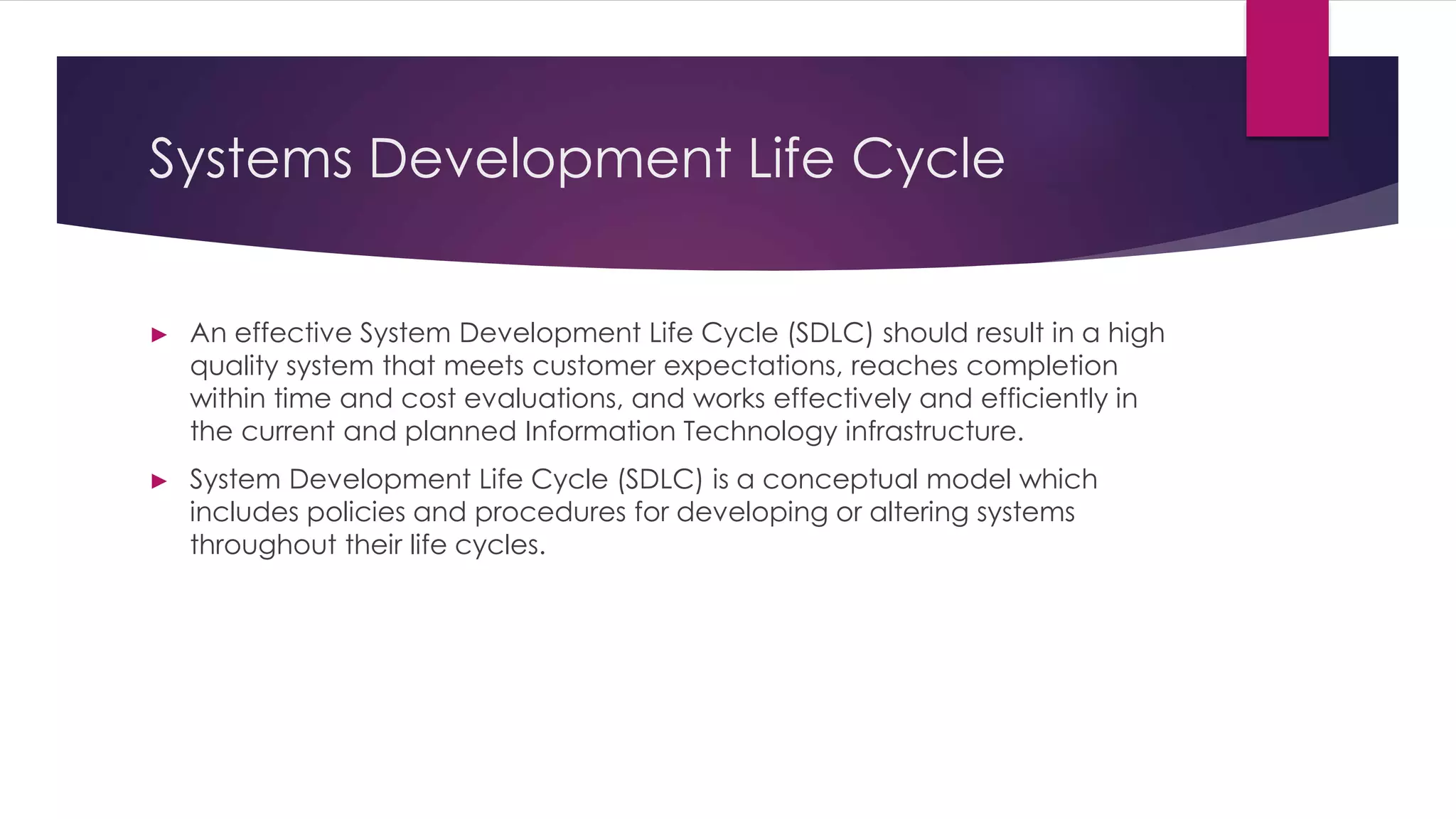The document discusses the systems development life cycle (SDLC) process and the role of a systems analyst. It provides details on the following:
- The SDLC includes phases such as planning, analysis, design, implementation, testing, deployment, operations, and maintenance.
- A systems analyst guides the SDLC process by defining requirements, prioritizing needs, and ensuring the system meets user and organizational goals.
- The analyst must possess strong interpersonal, analytical, management, and technical skills to effectively carry out their role.






































